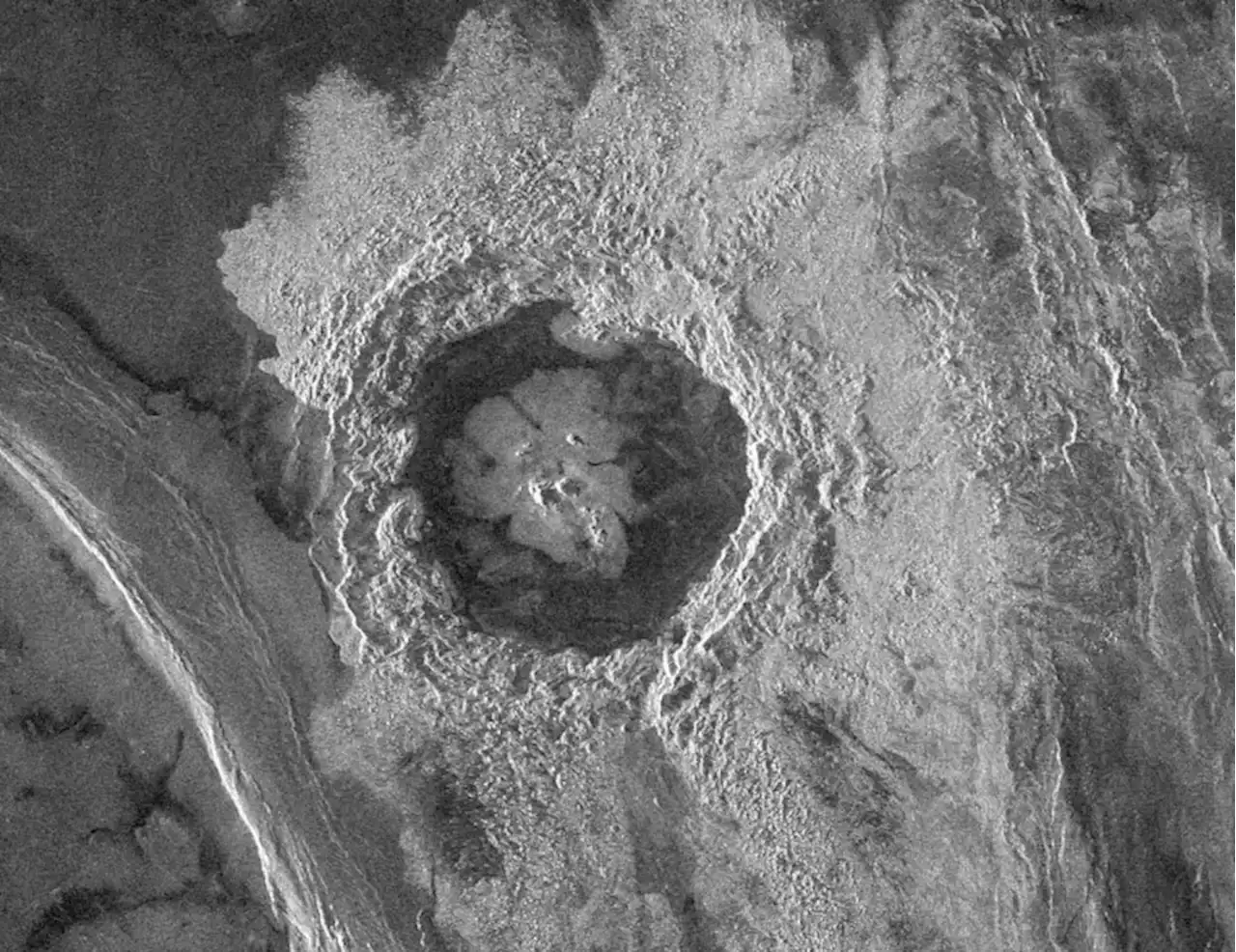With two missions to Venus in the near future, NASA has re-released a Magellan image of the Dickinson Crater, named after Emily Dickinson.
Dickinson crater is complex and has a partial central ring caused by gravitational equilibrium. Only large impacts produce this type of crater. The floor of the crater contains both radar-bright and radar-dark materials. Radar-bright materials surround the crater on all sides except the west, suggesting that the impactor travelled an oblique path into the surface. Scientists think the bright material can be either impact melt or volcanic material released after the impact.
85% of Venus’ 1,000 craters are in pristine condition. The number of craters and their preserved conditions hint at Venus’ history. Scientists think that the planet underwent a near-global resurfacing event some 300 million to 600 million years ago and that volcanic activity decayed after that. This topographic map of Venus gives a better sense of Dickinson Crater’s location. Image Credit: NASA/USGS/Arecibo
